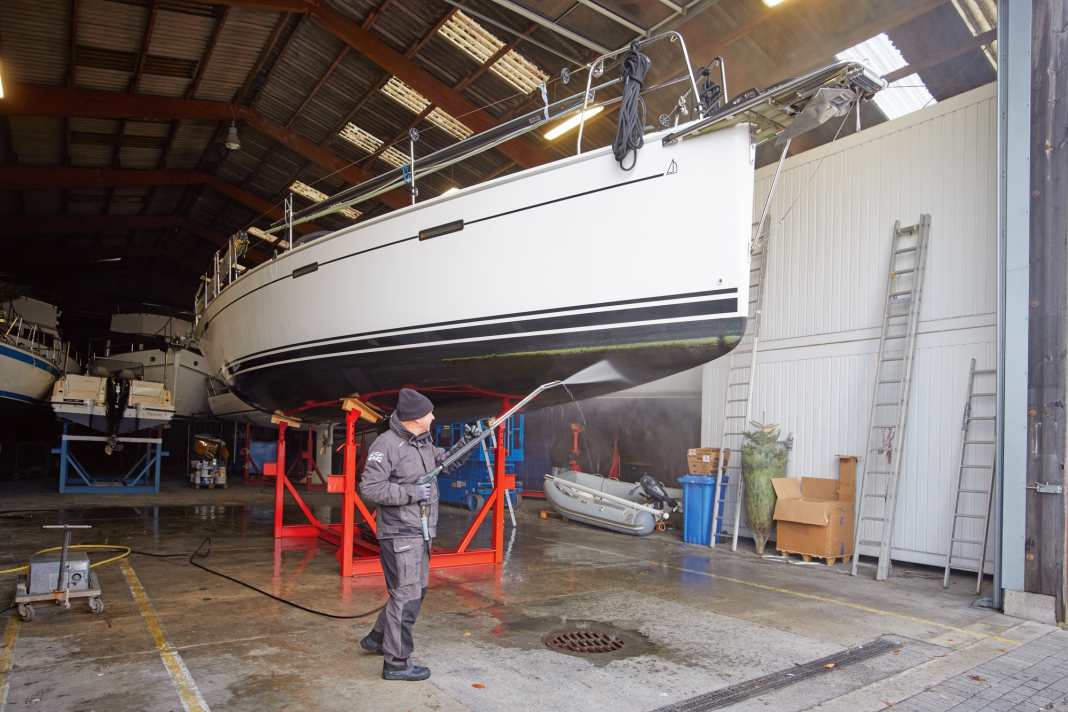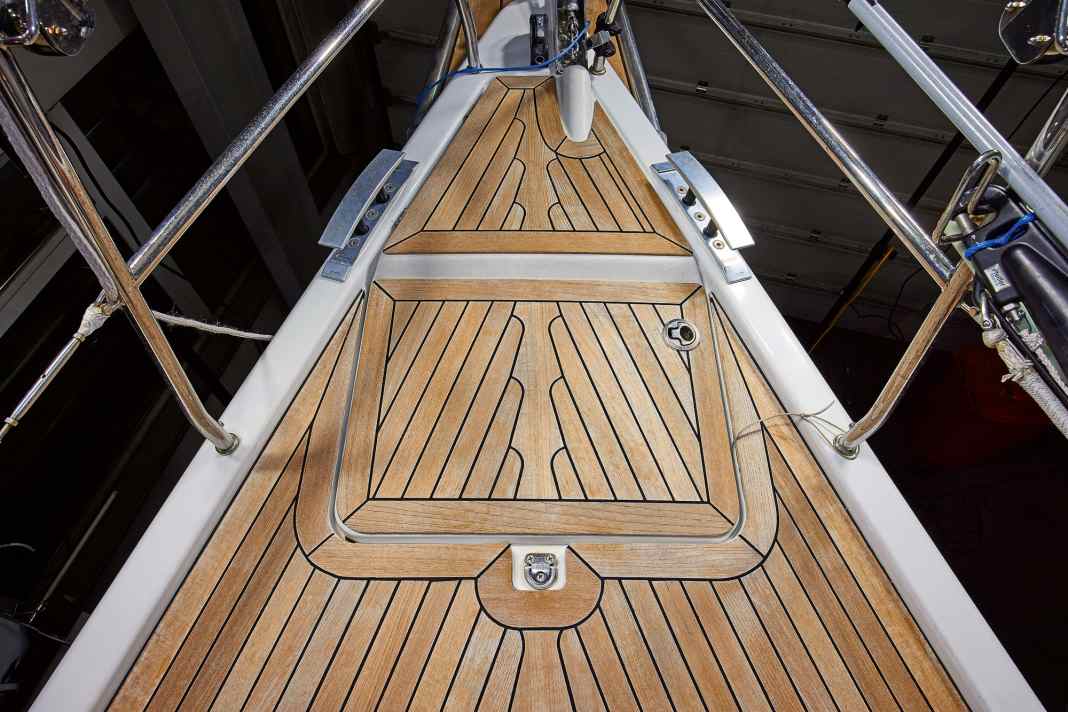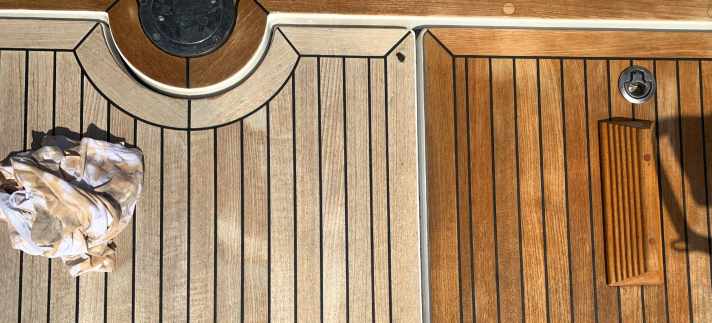





The teak deck, one of the few reminiscences of the great age of sailing ships, the aristocracy of every cruising boat, whether classic or just off the production line. A mostly expensive equipment feature that is as pretty as it is superfluous.
Structured GRP decks are non-slip and insulating all by themselves. And since the embargo, tropical wood from Myanmar, the main source of good quality, is no longer available. The alternative, if you don't want to rely on artificial products such as Flexiteek or Esthec, is plantation-grown, fast-growing teak with all its disadvantages such as lower resistance to bacteria and a softer structure. Both are unattractive. The teak deck quickly looks unkempt, rubs off and loses small crumbs of wood that look like dirt.
This can be remedied before and after the season with the proven mould protection agent Boracol, which helps against infestation with organic substances as well as mildew stains. It gives the material a dignified grey appearance, the classic shade of aged teak decking.
Ways to a fresh teak deck
If you want to preserve the look of a freshly laid or sanded new teak deck, you can oil it, but you won't enjoy it for long. This has to be done several times a season and can still become stained and scratchy. There is a good alternative: Semco, a sealant from the USA that is designed to preserve the oils naturally occurring in the wood and promises to act as a barrier to UV light and moisture. Colour pigments are added to give the teak a fresh look. The manufacturer offers its sealant in five shades: "Cleartone" contains fewer pigments and is less colourful, "Natural" is intended to create the slightly golden sheen of a slightly used teak deck, "Honeytone" looks like a new deck, "Goldtone" has a reddish-brownish effect like a freshly sanded surface, and "Classic Brown" looks like a wet teak deck. The good thing is that the colours can be combined.
Teak deck system from a professional
We tested the system together with Peter Wrede Yacht Refits, who sells the Teak Protect System and offers the application, on a five-year-old Dehler 38. Its teak deck had been regularly treated with Boracol, but still showed stains and wood abrasion.
Before the actual treatment, not only the teak deck, but the entire deck should be thoroughly cleaned with water and a chemical cleaner. This creates a clean working surface and has to be done anyway. However, this is not necessary for the actual teak deck cleaning.
The work is then carried out in three steps: Firstly, the teak deck is deep-cleaned with a special cleaner from Semco. Then the teak surface is brightened with a neutraliser - it looks like a fresh deck. Finally, the teak is sealed and should then be protected against dirt, ageing and abrasion.
The result was completely convincing. The teak deck showed no new stains, was easy to keep clean and only had to be re-treated once during the season. The one-off deep cleaning for a twelve metre long yacht costs just under 800 euros (plus travel costs), while the application with Semco can be carried out by the customer.
Clean and neutralise step by step






Seal and protect step by step






Post-treatment
The treatment has proved its worth. The deck has shown no new stains, the abrasion has been reduced and the wood looks natural. After around four months, we re-treated once during the season, which took about an hour. At the end of the season, the dry deck still looked quite high quality, only the wet surface indicated that a further application would be useful. Conclusion: a recommendation for old decks

